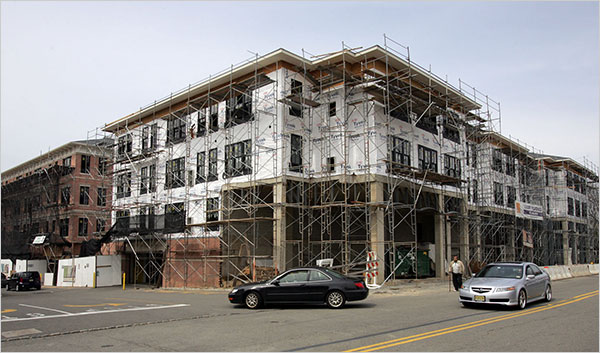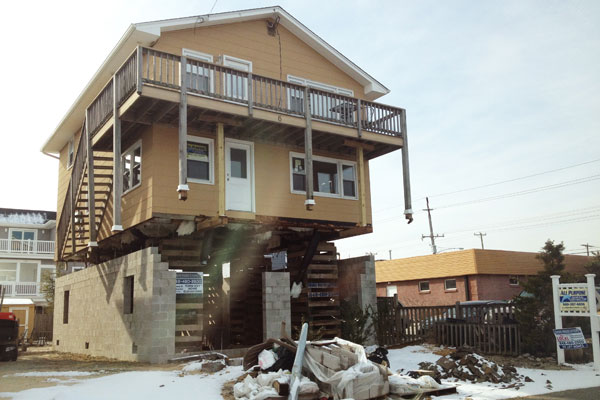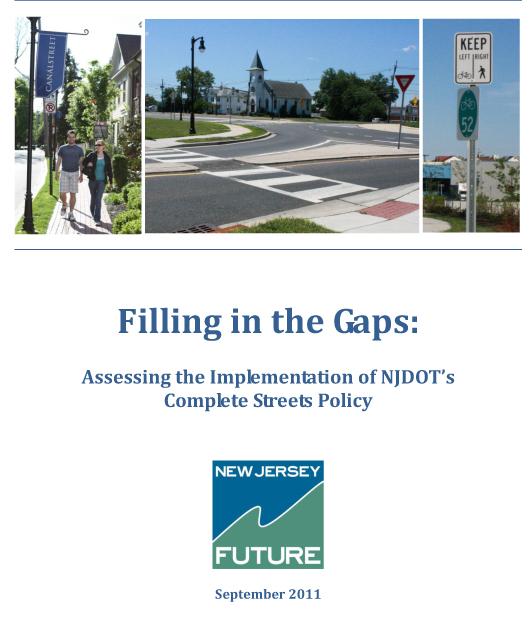New Jersey Future Blog
Report Finds Robust Growth in “Built-Out” Towns
December 9th, 2010 by Tim Evans
Just because a town is approaching “build-out” doesn’t mean it has no room for growth.
In fact, a New Jersey Future analysis of building permits issued over the past two decades reveals that there has been more robust construction activity in towns that are already at least 90 percent “built-out” than in places that have more developable land available.
In addition, a review of building permits issued in 2009 alone suggests that construction activity has been less adversely affected by the current recession in more traditional, compact communities than in more spread-out places. In the towns already at least 90 percent “built-out,” the number of building permits issued in 2009 was about one-half of the 2000-2007 average. This was significantly better than the experience for the state as a whole, where building permits issued in 2009 plummeted to about one-third of the 2000-2007 average.
A substantial amount of the building permit activity in the last decade took place in the state’s major cities. In the 1990s, the eight “urban centers” designated by the State Development and Redevelopment Plan (Newark, Jersey City, Paterson, Elizabeth, Trenton, Camden, New Brunswick and Atlantic City) accounted for only 3.9 percent of total building permits issued statewide. In the 2000s, their share of the state total tripled, to 11.8 percent.
The building-permit boom was not confined to big cities, however. A total of 204 New Jersey cities and towns make the list of municipalities that are already at least 90 percent “built-out,” including Ridgewood, Millburn, Summit, Chatham Borough, Princeton Borough, Haddonfield and Stone Harbor. (For a complete list of these municipalities, as well as the number of building permits each municipality issued in the 1990s and 2000s, please click here.)
Among other key findings of the New Jersey Future analysis:
- The 204 municipalities that are at least 90 percent “built-out” issued 2.7 times more building permits in the 2000s than in the 1990s. Only 33 of the 204 issued fewer permits in the 2000s than in the 1990s. On the other end of the scale, 68 of the 204 saw their permit activity more than triple.
- In the 2000s, the 204 “built-out” municipalities accounted for 34 percent of all building permits issued in the state. This is more than double the rate of the previous decade, when these same municipalities accounted for only 15 percent of building permits issued.
- Units in multi-family structures made up 30 percent of all building permits issued in the state between 2000 and 2009, up from 13 percent in the 1990s.
- The entirety of the statewide increase in building permit activity in the 2000s, as compared to 1990s levels, was attributable to the sharp increase in permits in “built-out” areas.
The report describes several forces at work behind the increase in building activity in “built-out” areas. Most significant was the adoption of the Rehabilitation Subcode in 1998, which made it easier to renovate existing buildings. Building permit data reflect a spike of activity in “built-out” municipalities after the subcode was adopted.
Also, a number of longer-term demographic and cultural shifts — including shrinking household size, retiring Baby Boomers in search of cultural amenities, and increasing awareness of the greenhouse-gas effects of a car-dependent lifestyle — are generating new demand for housing in more traditional, compact neighborhoods.
The higher rate of construction activity in already developed areas than in the state as a whole during the current recession complements evidence from housing markets across the country that properties in traditional, compact neighborhoods have held their value better than those in more far-flung suburban and rural locations.
These findings not only dispel the notion that “built-out” equals “no growth,” but also lend guidance to the ongoing debate about how to address New Jersey’s affordable-housing needs. Under the current Council on Affordable Housing system, some “built-out” municipalities were given a “vacant land adjustment” that reduced the number of affordable-housing units they were required to provide. But according to the report’s author, New Jersey Future Research Director Tim Evans, this adjustment may not be necessary.
“Undeveloped land is not a prerequisite for new residential growth,” Evans noted. “The rationale behind the ‘vacant land adjustment’ is that a lack of developable land implies that there is no room left to build affordable housing, but this assertion is not borne out by the data.”

















